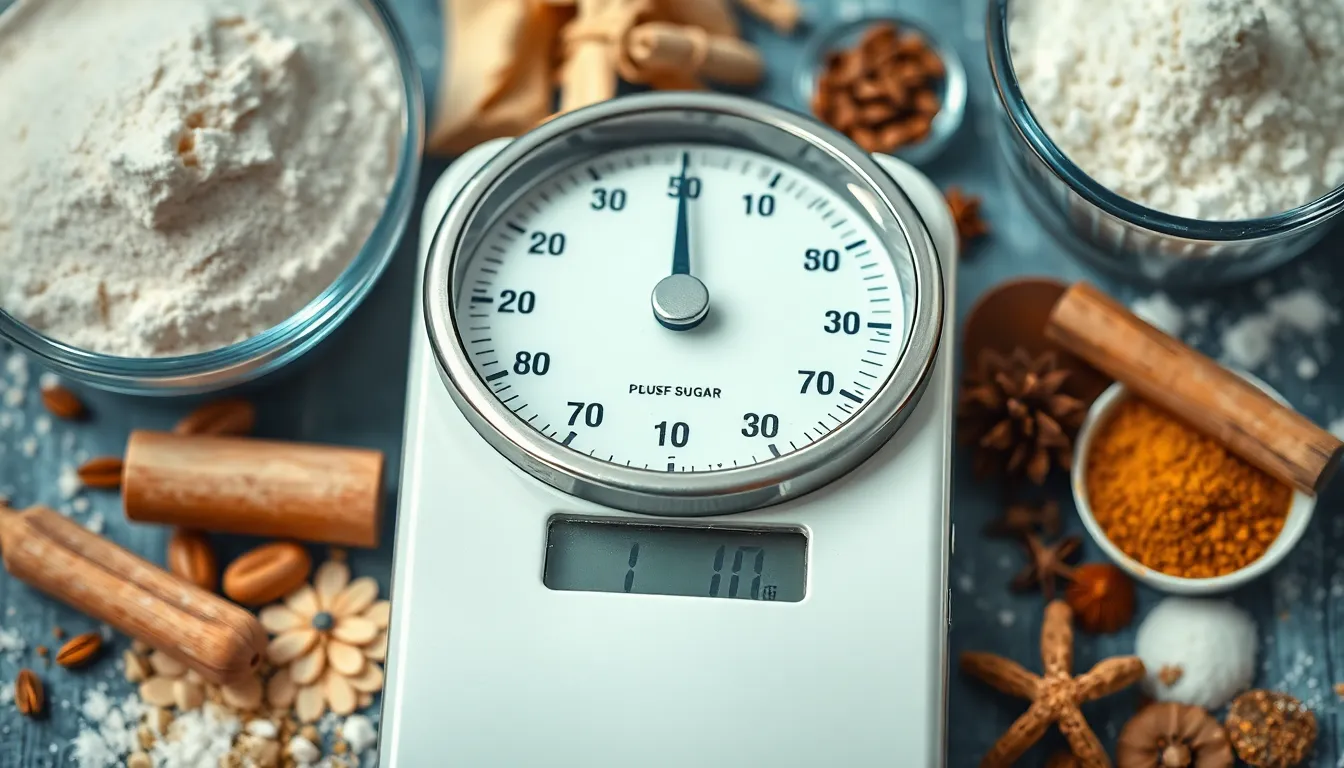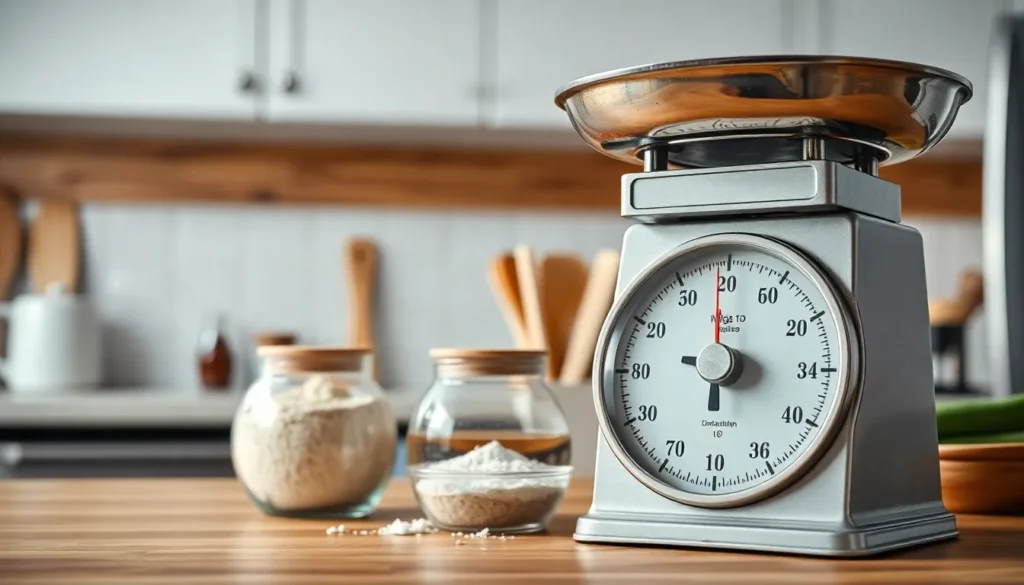When it comes to measurements, it’s easy to get lost in translation. Ever found yourself staring blankly at a recipe or a nutrition label, wondering how many milligrams are in a gram? Spoiler alert: it’s a lot more than you think! Understanding these conversions can save you from culinary catastrophes or nutritional miscalculations that could make your head spin.
Table of Contents
ToggleUnderstanding Grams and Milligrams
Grams and milligrams represent two common units of measurement for mass in the metric system. A gram equals 1,000 milligrams, making it essential for conversions in cooking and nutrition. This conversion plays a crucial role when managing ingredient quantities accurately.
Understanding these units matters when evaluating nutritional information. For instance, labels often list values in milligrams, especially for vitamins and minerals, while recipes frequently use grams. Relying on precise measurements reduces the likelihood of miscalculations that can affect health and wellness.
Converting grams to milligrams requires simple multiplication. Multiplying the number of grams by 1,000 offers a quick method for finding the equivalent in milligrams. For example, 5 grams converts to 5,000 milligrams.
On the other hand, converting milligrams to grams involves division. Dividing the milligram value by 1,000 provides the gram equivalent. For instance, 2,500 milligrams equals 2.5 grams. Such calculations ensure accuracy when measuring ingredients for recipes or tracking nutrient intake.
Misunderstandings can arise when dealing with both units, making it vital to double-check conversions. Clear knowledge of these measurements enhances effectiveness in cooking, baking, and nutritional analysis. Equipping oneself with these conversion skills helps maintain consistency and improves culinary outcomes.
Conversion Basics

Understanding conversion basics is vital for anyone dealing with measurements. Clarity in units like grams and milligrams enhances accuracy in cooking and nutrition.
The Metric System Overview
The metric system, widely used around the world, relies on decimal-based units. Grams and milligrams represent mass measurements. One gram equals 1,000 milligrams, illustrating the straightforward relationship between these units. In everyday applications, grams serve as a base unit, while milligrams provide smaller, precise measurements. Scientists and chefs alike utilize this system for its simplicity and uniformity. A solid grasp of the metric system ensures effective communication in various fields, especially culinary and nutritional contexts.
Importance of Accurate Conversions
Accurate conversions significantly impact recipe outcomes and nutritional assessments. Miscalculating ingredient quantities can lead to unbalanced flavors or unsafe consumption levels. Ingredients often list nutritional information in milligrams, while home recipes typically use grams. This discrepancy makes it essential to convert between these units correctly. For instance, doubling a recipe requires awareness of both measurement units to maintain proportions. Careful attention to conversions avoids common mistakes and enhances overall results in dishes. Prioritizing precision in measurements fosters confidence in cooking and dietary choices.
Conversion Calculation
Understanding conversions from grams to milligrams simplifies measuring ingredients. Grams and milligrams relate to each other in a straightforward way, aiding in both cooking and nutrition.
How to Convert Grams to Milligrams
To convert grams to milligrams, multiply the number of grams by 1,000. For example, 2 grams equals 2,000 milligrams. This simple calculation proves useful when checking ingredient labels, as many nutritional values appear in milligrams. An accurate conversion ensures proper ingredient usage in recipes, promoting more successful cooking outcomes.
Common Conversions
Several common conversions between grams and milligrams arise frequently. Here are a few examples:
| Grams (g) | Milligrams (mg) |
|---|---|
| 1 | 1,000 |
| 5 | 5,000 |
| 10 | 10,000 |
| 50 | 50,000 |
| 100 | 100,000 |
These conversions give a quick reference for everyday cooking tasks. Mastering these values enhances confidence and produces better results in various culinary preparations.
Practical Applications
Understanding the conversion from grams to milligrams proves valuable in various contexts. Both cooking and nutrition rely heavily on this metric conversion.
Cooking and Baking
In culinary settings, precise measurements ensure delightful outcomes. Chefs often convert recipe ingredient weights from grams to milligrams, especially in professional environments where accuracy is critical. For instance, when using spices or leavening agents, slight variations can influence flavor and texture. A recipe requiring 2 grams of baking powder translates to 2,000 milligrams, facilitating easy comparison with packaged ingredients. Using conversion charts can streamline the measuring process, enhancing efficiency. Additional conversions, such as 10 grams equaling 10,000 milligrams, simplify cooking tasks and promote consistent results across dishes.
Medical Dosages
In healthcare, accurate dosages directly affect patient safety. Medications often list quantities in milligrams, while recommendations may appear in grams. For example, a prescribed dose of 0.5 grams corresponds to 500 milligrams, emphasizing the importance of understanding this conversion. Miscalculating these measurements can lead to ineffective treatment or adverse effects. Health professionals utilize precise conversions to ensure dosages align with patient needs. Familiarity with these conversions aids in maintaining standard protocols and mitigates the risk of errors during medication administration. Mastering this skill enhances clarity and safety in healthcare settings.
Understanding the conversion between grams and milligrams is crucial for anyone involved in cooking or nutrition. Mastering this skill not only ensures accuracy in recipes but also enhances safety in dietary practices. By knowing that one gram equals 1,000 milligrams, individuals can confidently navigate ingredient measurements and nutritional information.
This knowledge empowers chefs and health professionals alike to make informed decisions. Whether adjusting a recipe or calculating medication dosages, precise conversions can significantly impact outcomes. Embracing these simple yet powerful conversion techniques fosters clarity and consistency, ultimately leading to better culinary and health results.








